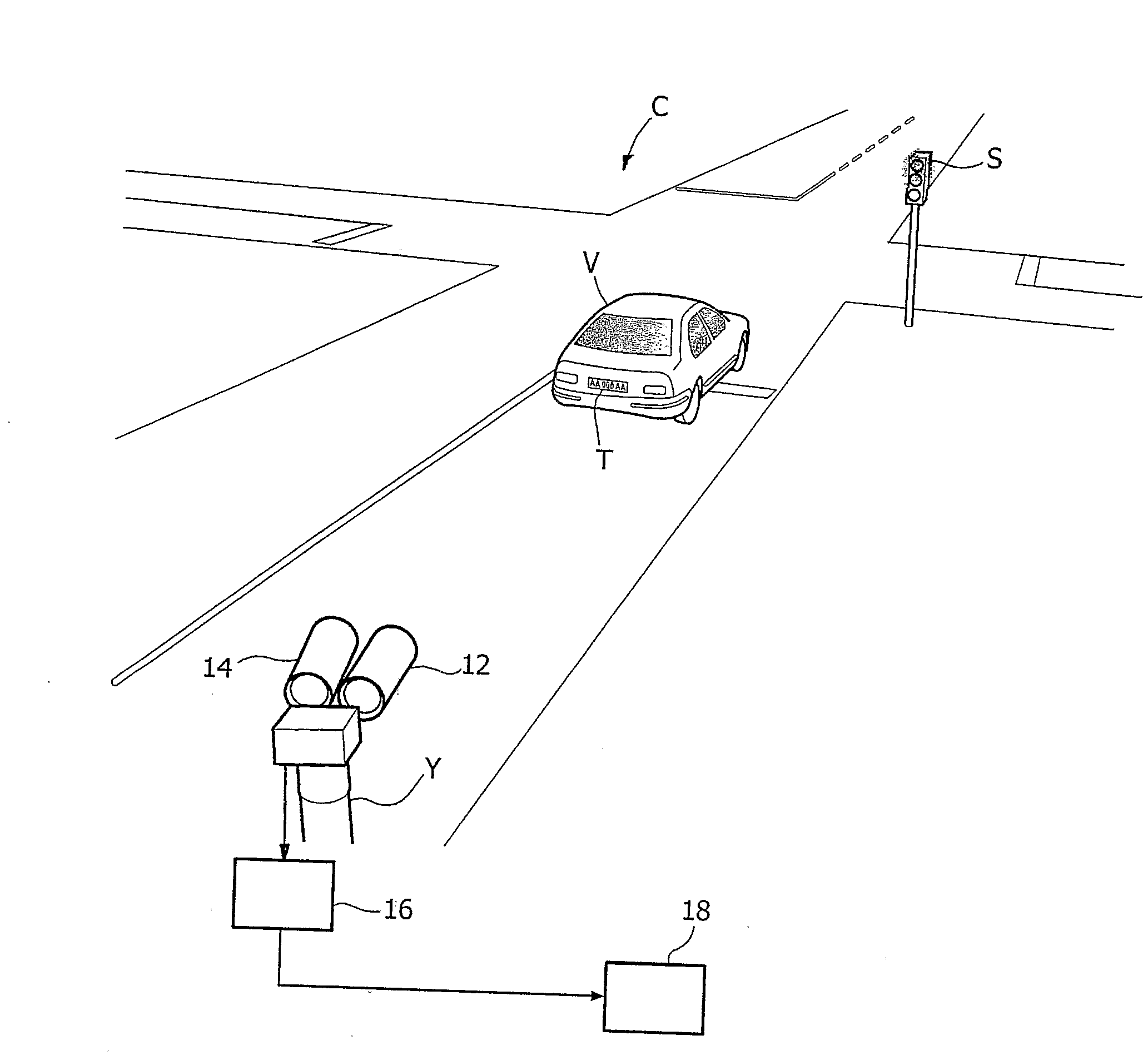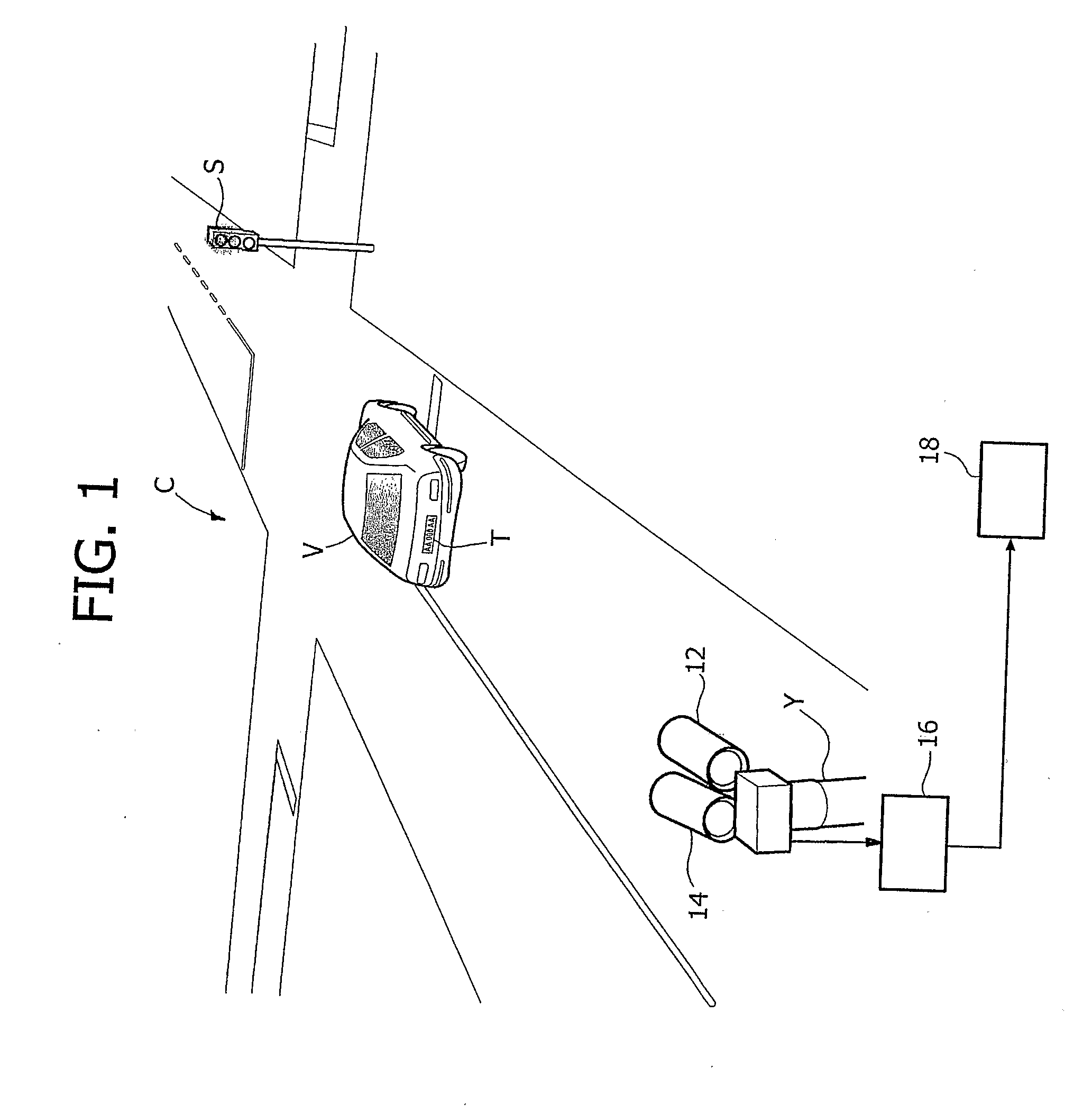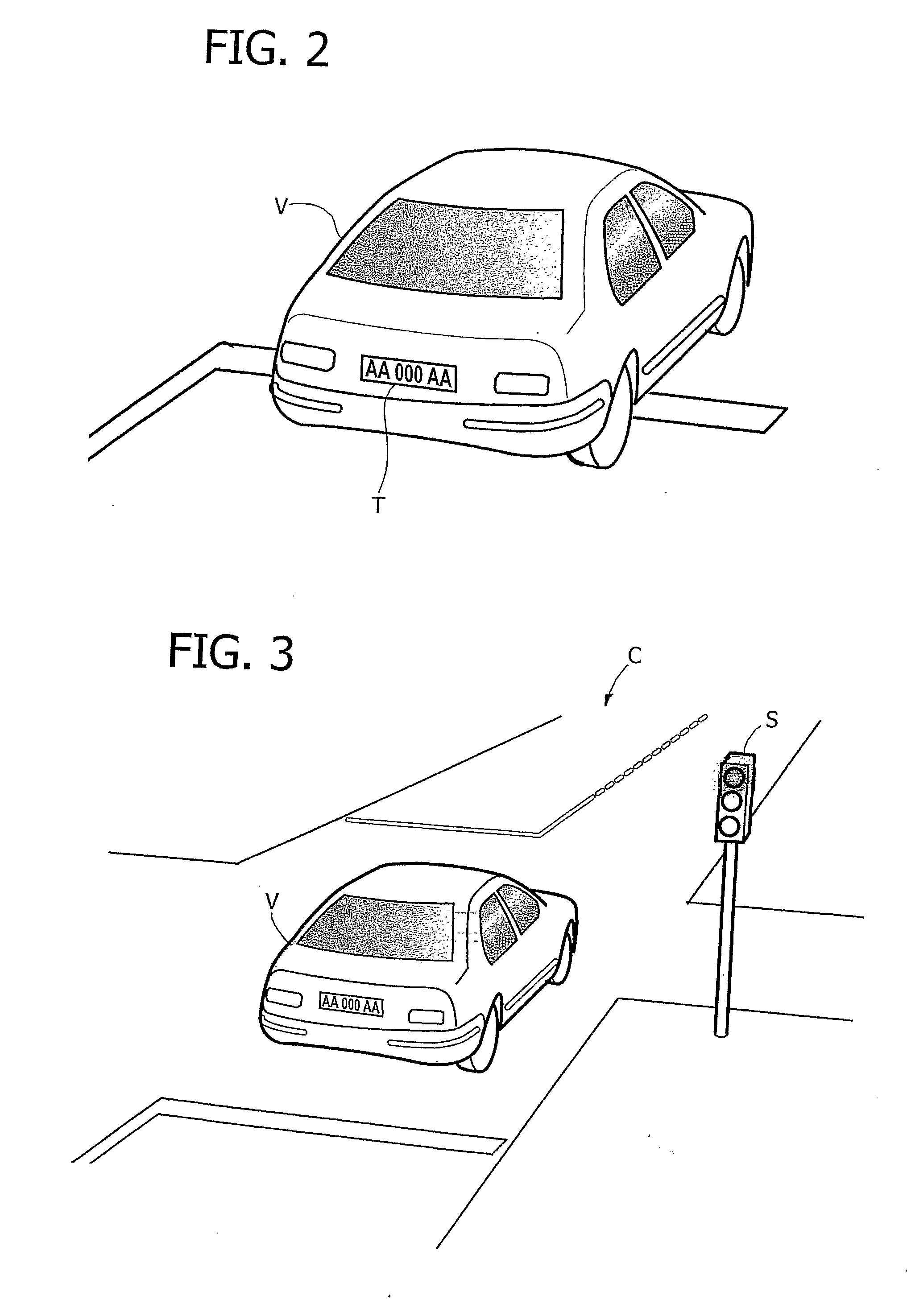System for detecting vehicles
a technology for detecting systems and vehicles, applied in the field of systems for detecting vehicles, can solve the problems of frequent false alarms, high maintenance costs, and poor scene luminance,
- Summary
- Abstract
- Description
- Claims
- Application Information
AI Technical Summary
Benefits of technology
Problems solved by technology
Method used
Image
Examples
Embodiment Construction
[0036]The following detailed description relates, by way of example, to the possible use of a system of the type described in correspondence with a road intersection C served by traffic lights of which one of the traffic lights S is visible. This is in order to detect infringements of the traffic law essentially relating to:[0037]failure to stop at the intersection when the traffic lights are red, and / or[0038]exceeding a speed limit.
[0039]In the configuration to which FIG. 1 relates, the system (indicated overall with 10 in the diagram in FIG. 4) comprises a plurality of installations installed on a pole Y and including a pair of video cameras 12, 14 (for preference the first infrared and the second colour) linked to a processing unit 16 (shown in FIG. 1 as situated in the neighbourhood of the video camera), in its turn communicating with a central unit 18, in general at a remote control centre.
[0040]Connections among the video cameras 12 and 14, the processing unit 16 (or the vario...
PUM
 Login to View More
Login to View More Abstract
Description
Claims
Application Information
 Login to View More
Login to View More - R&D
- Intellectual Property
- Life Sciences
- Materials
- Tech Scout
- Unparalleled Data Quality
- Higher Quality Content
- 60% Fewer Hallucinations
Browse by: Latest US Patents, China's latest patents, Technical Efficacy Thesaurus, Application Domain, Technology Topic, Popular Technical Reports.
© 2025 PatSnap. All rights reserved.Legal|Privacy policy|Modern Slavery Act Transparency Statement|Sitemap|About US| Contact US: help@patsnap.com



